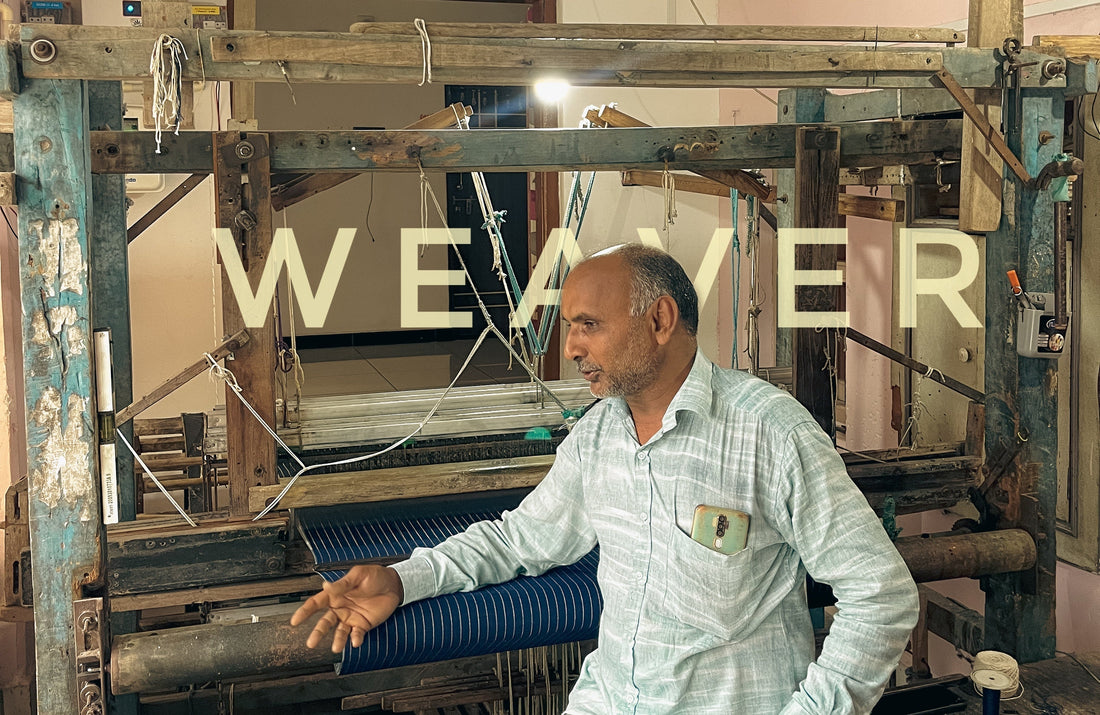
EVERY THREAD HAS A TALE "MEET THE WEAVERS"
Share
Kahani Khadi Ki is our heartfelt tribute to the unsung heroes of Indian handloom the weavers.
With nimble fingers and timeless skill, these artisans have preserved and passed down traditions that are not just centuries old, but deeply woven into the fabric of our identity.
In this space, we share stories from India’s handloom heartlands from the rhythmic clack of looms in sunlit courtyards, to quiet conversations under thread-filled verandas.
These are voices from villages where khadi is not just cloth it’s culture, pride, and purpose.
While many from the younger generation are exploring new paths in cities, there are still those who continue to carry forward the craft not just as a livelihood, but as a legacy.
Because these stories are not just about fabric.
Because behind every piece of khadi,
there is a name,
a face,
and a story that deserves to be told.
LET'S SEE WHAT THEIR SIDE OF IT

In the sunlit verandah of a modest home in Gondal, Gujarat, 68-year-old Jagdishbhai sits beside his wooden handloom, weaving quietly, while his wife gently helps him wind the yarn. Together, they spend hours each day not just creating fabric but keeping alive a legacy.

Weaving is not just his livelihood.
It’s the only skill he ever truly knew.
“I never went to school much,” he says with a quiet smile. “We had a small piece of land, but farming is no longer what it used to be. The rains don’t come on time anymore. The soil is tired. And I had these hands… trained only for this.”
Jagdishbhai has four children, all now settled in different cities across Gujarat. They’ve moved on to other jobs, offices, shops to delivery work. “They are happy and doing well. But they’ve left this behind,” he says, nodding toward the loom.
When he first started weaving full-time, the physical pain was intense. “My back, my shoulders, my hands… it was all new. The loom demands everything. But over time,” he adds, “this pain became my strength. It showed me I could still create something with my own two hands.”
Now, weaving is a part of who he is and how he holds on to dignity in his later years.

On weekends when he sits with a few old friends in the village some still farming, others running small shops or doing odd jobs. When he shows them his finely woven khadi, they admire its. Yet, someone always asks, “Why continue this work when machines can produce it faster?
His reply is simple, but powerful:
“Yes, machines make cloth, but I make stories.”
“The machine doesn’t know my name. This fabric does.”
“The clothes people wear today full of plastic and chemicals feel more like garbage bags than garments.”
“What I weave is real. It breathes, it lasts, it remembers.”
And that is what makes Jagdishbhai’s work so unique. In a world that’s rushing forward, he chooses to go slow. Not because he can’t keep up but because some things deserve time. Care. Soul.
He said “Before, you could hear the sound of looms everywhere,
“Almost every house and family used to weave cloth.”
But slowly, things changed. Wages became low and fewer people wanted to buy the handwoven cloth.
So, many families stopped weaving.
“Now, most of the looms are quiet,” he says sadly.

But In that simple verandah, the loom still sings its quiet song thread by thread, story by story.
Because in the hands of people like Jagdishbhai, tradition is not fading.
It’s being passed on with strength, love, and pride.
